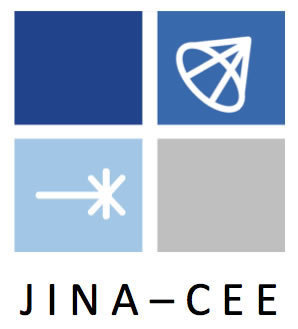
The National Science Foundation (NSF) announced Monday (March 30) that it is renewing funding for a University of Notre Dame-led institute dedicated to the of study the broad range of nuclear processes in the universe that control stellar evolution, trigger supernova events and lead to thermonuclear explosions observed as novae and X-ray and Y-ray bursts.
The Joint Institute for Nuclear Astrophysics (JINA) was established and funded in 2003 as a NSF Physics Frontier Center between Notre Dame, Michigan State University, the University of Chicago and Argonne National Laboratory to address critical questions about the origin of heavy elements in nature or nuclear processes on compact stellar objects.
The overarching Physics Frontiers Centers (PFC) program supports university-based centers and institutes where the collective efforts of a larger group of individuals can result in transformational advances in specific areas of physics, such as atomic, molecular, optical, plasma, elementary particle, nuclear, astrophysical, gravitational, accelerator and biological physics. Multidisciplinary projects involving related fields can also take place in these collaborative environments. Additionally, the centers include creative, substantive activities aimed at enhancing education, broadening participation of traditionally underrepresented groups and conducting outreach to the scientific community and general public. These awards are made for five years with a potential one-year extension.
NSF’s Physics Division announced awards for five Physics Frontiers Centers — four of which are renewals and one which is a new center. NSF now has a total of 10 of these active centers that focus on various aspects of physics.
The centers are renewed with new focuses and activities.
JINA will now be known as the Joint Institute for Nuclear Astrophysics – Center for the Evolution of the Elements (JINA-CEE) and have four core institutions: Michigan State University, Notre Dame, Arizona State University and University of Washington.
The four core institutions of JINA-CEE, along with their 18 associated domestic institutions and partnerships with other international centers, bring together nuclear physics and astrophysics for theoretical, computational and laboratory investigations. JINA-CEE will explore two closely connected topics: the origin of the elements beyond those created in the Big Bang and the properties of dense matter in neutron stars. The Physics Frontier Center will use interdisciplinary visitor, school and workshop programs to engage K-12, undergraduate and graduate students, teachers and the public.
“JINA-CEE has broadened its activities,” said Michael Wiescher, Notre Dame’s Freimann Professor of Nuclear Physics. “A new major focus is the physics of dense matter and neutron stars. Since Notre Dame hired Tim Beers, Notre Dame assumes with MIT the responsibility for the study of very old stars. On the experimental site, the NSL is next to the National Superconducting Cyclotron Laboratory at MSU, the lead institution. Particularly important for JINA-CEE is the new accelerator on campus, but also our latest initiative, a small accelerator located 4,500 feet below ground in the Black Hills in South Dakota to study nuclear reactions in a cosmic ray-free environment.”
As the founding director of JINA, Wiescher has had a front-row seat for the evolution of the Physics Frontier Center.
“It emerged from a small Midwest collaboration to a multi-institutional international research entity, with many collaboration agreements and research activities with the major nuclear physics research institutions in the U.S., Europe, China, India, Japan, Australia, South Africa, Brazil, Mexico, Canada, Jordan, Israel, Turkey, Austria, Germany, Hungary, Romania, France, Italy, U.K. and Russia," Wiescher said.
“There are about 10 Physics Frontier Centers funded by NSF. They are being funded for a time period of five years. After five years they must re-compete. JINA is one of the few centers that successfully competed for a third term.”
Contact: Michael Wiescher, 574-631-6788, Michael.C.Wiescher.1@nd.edu
Originally published by at news.nd.edu on March 30, 2015.